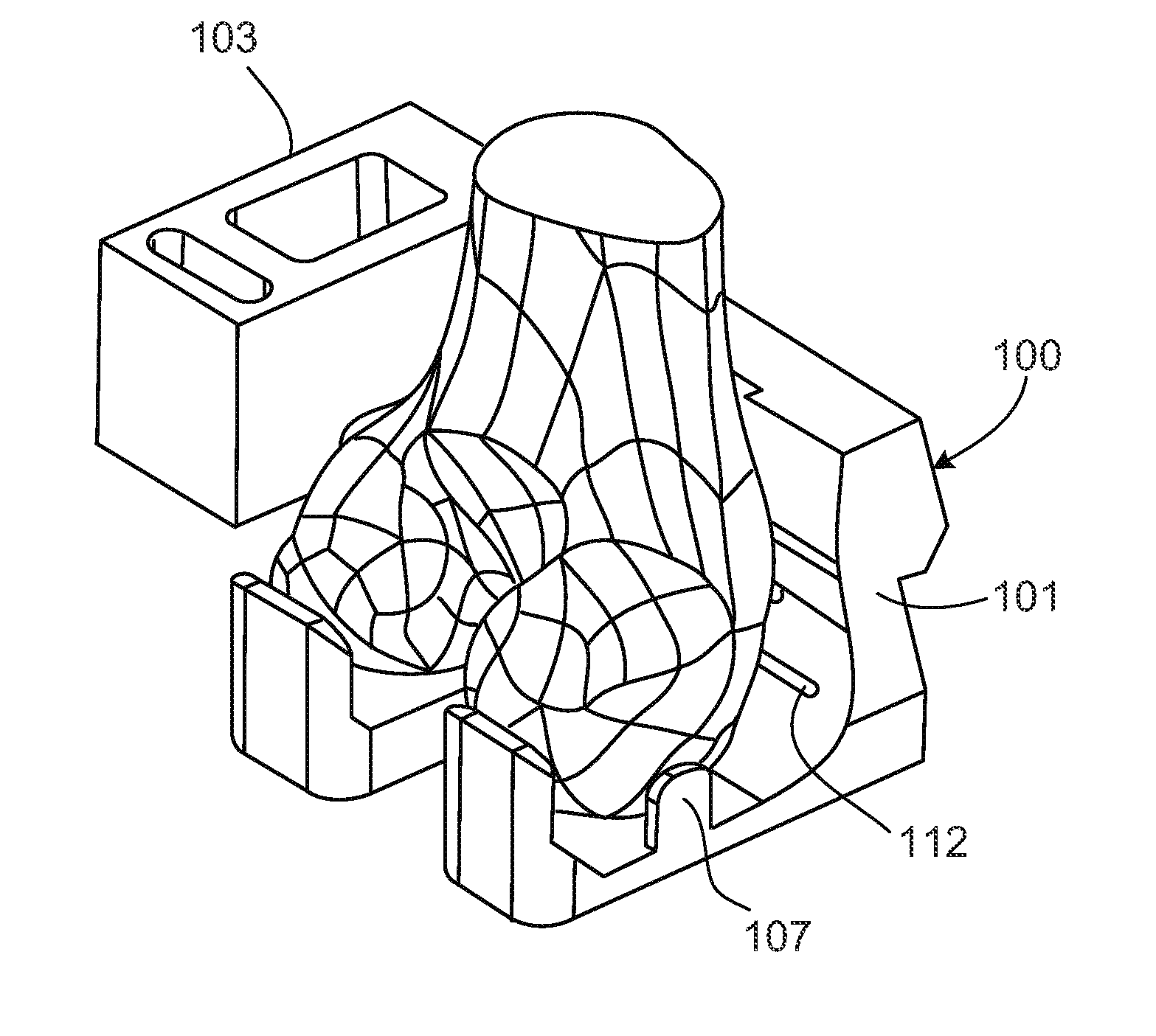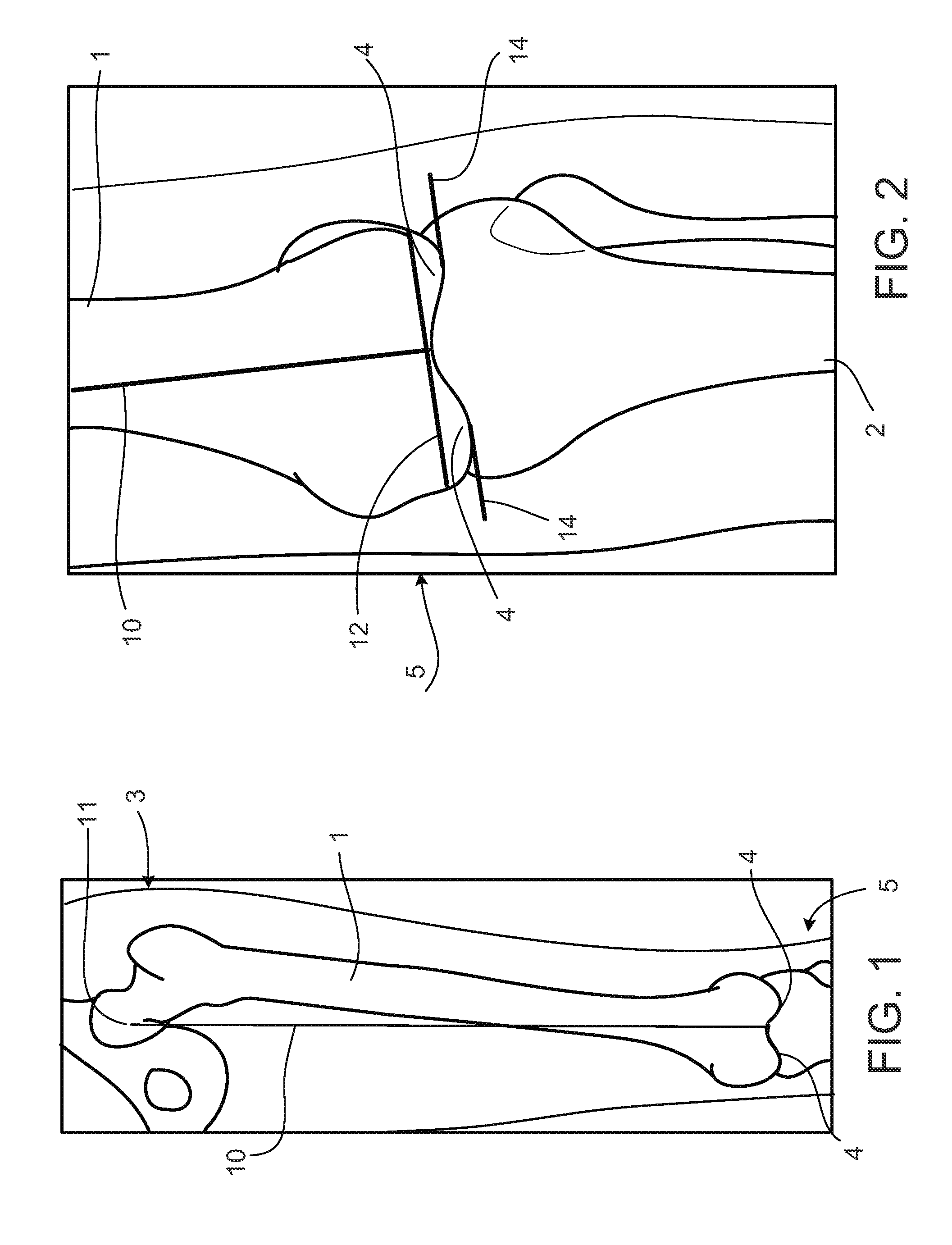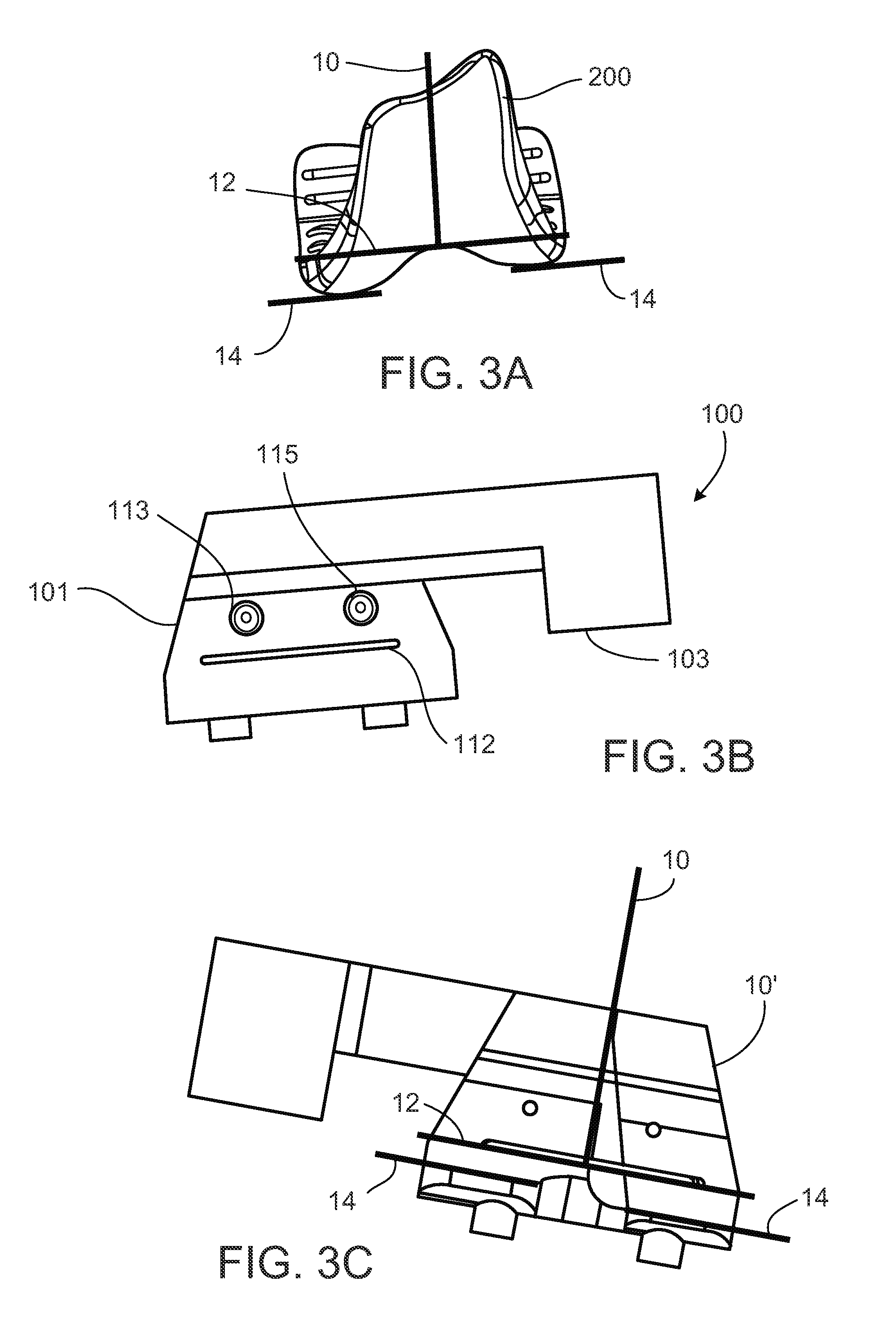Alignment devices and methods
a technology of alignment devices and balancing devices, applied in the field of joint alignment and balancing devices and methods for arthroplasty implants, can solve the problems of poor alignment of orthopedic implants relative, early wear and revision of orthopedic implants, and many of these machines and instruments are expensive and have not been readily adopted
- Summary
- Abstract
- Description
- Claims
- Application Information
AI Technical Summary
Benefits of technology
Problems solved by technology
Method used
Image
Examples
Embodiment Construction
[0047]The following descriptions of the depicted embodiments are merely exemplary in nature and are in no way intended to limit the invention, its application, or uses.
[0048]An anterior to posterior radiograph of a patient's femur 1, hip 3, and knee 5 is shown in FIG. 1. FIG. 2 shows the patient's femur 1, knee 5, and tibia 2. The images provided in FIGS. 1 and 2 are radiograph images produced with x-rays. In some embodiments, other imaging techniques and devices may be used, but in this embodiment, radiograph images are used to capture preoperative information for the manufacture of an alignment guide and for comparison with postoperative alignment information. An axis 10 is illustrated in FIGS. 1 and 2 that passes between the patient's femoral condyles 4 and through the patient's hip center 11 (FIG. 1). This axis 10 is well-known to approximate an appropriate alignment for a knee arthroplasty device. An axis 12 is illustrated in FIG. 2 that is substantially perpendicular to the ax...
PUM
| Property | Measurement | Unit |
|---|---|---|
| thickness | aaaaa | aaaaa |
| rotational displacement | aaaaa | aaaaa |
| force | aaaaa | aaaaa |
Abstract
Description
Claims
Application Information
 Login to View More
Login to View More - R&D
- Intellectual Property
- Life Sciences
- Materials
- Tech Scout
- Unparalleled Data Quality
- Higher Quality Content
- 60% Fewer Hallucinations
Browse by: Latest US Patents, China's latest patents, Technical Efficacy Thesaurus, Application Domain, Technology Topic, Popular Technical Reports.
© 2025 PatSnap. All rights reserved.Legal|Privacy policy|Modern Slavery Act Transparency Statement|Sitemap|About US| Contact US: help@patsnap.com



